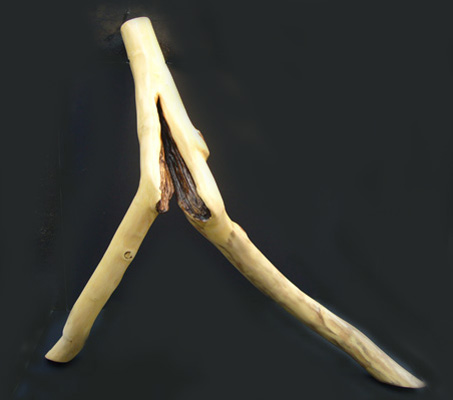REFLECTIONS ON CONCEPTUAL ART Jordi Rodríguez-Amat
Unlike the function that has been given to art in other historical moment, conceptual art functions as a language in the sense that it is not what the object represents but rather what the object intrinsically manifests in terms of language. We find that art dematerializes. Conceptual art seeks a conceptualism without considering the object as such. We can never talk about style. The style with all its formal, compositional, chromatic values, etc., etc. has lost all its meaning. This is why conceptual art does not consider beauty, nor any other of the values of art of other times. If we free conceptual art from all these values, with what support can the artist express the content of their message ? This question is impossible to answer in an absolute way, as the message that this art can generate is not coded. The reading that can be made of a traditional work of art is always relative to the spectator, relative to his sensitivity, to his training, to his desires among many others. These means cannot serve when the viewer is confronted with a conceptual work. Can a conceptual work be explained if we cannot consider aesthetic values? We can state that conceptual art does not attempt to destroy all aesthetic principles however does not take them into account. The object on which the work of a conceptual artist is based does not seek to decipher ideas in the form of a hieroglyph, on the contrary, it allows through non-intellectual means a dialogue that, according to the spectator, generates personal attitudes, attitudes that may even be rejected with an ironic spirit or not. The absurd may have, for certain viewers, a significance. The lack of a specific formulation on which this art can be based is one of its characteristics. I personally consider that the word art should disappear from this concept. For the simple fact that conceptual art cannot be limited to a single activity or attitude from of the creator, its principles can be freely extrapolated to any idea, whether concrete or not. A logical or absurd element can be part of the work. Even the principle of dematerialization of the object can be a valid element for conceptual art. Today, although the works that may be at the origin of this art, if we call it art, were made more than a century ago, it has not yet been possible to establish a clear line or conception that allows their logical understanding. This allows us to ask the question: is conceptual art an absurd game? In the same way it is not possible to formulate a theory that allows levels of research and work. Accepting the ultimate consequences we can come to, let’s call it creative, can fall into the denial of the very concept of conceptual art. Personally I do not want to take any attitude, either for or against, on the contrary, reflect on why a small minority of people accept this art. I do not want to defend or attack this art, but to expose what can be understood by conceptual art. Each of the readers of this writing can freely extract an idea, whether banal or absurd, of what certain creators, some gallery owners or art critics do in relation to this concept. To conclude and before showing some of the works considered mainstays of this movement allow me propose a question: who decides that a piece of work is conceptual art ? Jordi Rodríguez-Amat |
![]()
Examples of conceptual artworks.
 |
Marcel Duchamp: Bicycle Wheel. 1913
Bicycle wheel is an object of art created by French artist Marcel Duchamp, which consists of a bicycle wheel in its fork on a wooden stool. |
![]()
Robert Rauschenberg erased a drawing by Willem De Kooning, a painter of the so-called abstract expressionism. Rauschenberg requested the drawing from De Kooning with two conditions; that the work to be deleted was much loved by the author and that it was much loved by him. To his surprise, De Kooning accepted it. The idea or concept behind this conceptual work can lead us to ask some questions: Is more important a blank canvas or the story behind it? Can you remove the importance of the object and give it to the concept? Can erasing an artist's work be art? Is the creative process more valuable than the final object?
I ask the reader not to remain passive and reflect on this work. |
Robert Rauschenberg and Willem De Kooning. 1953
|
![]()
The reader can, if he wants, with all his right, consider this so-called conceptual art absurd and meaningless and not reflect on it. It must be said, however, that despite its possible absurdity, this same can be valued and reflected on as a cultural manifestation that depends on a specific moment and cannot be extrapolated to any other historical moment. Personally, considering that the absolute truth does not exist, I relativise the reflections that can be made on the concept "conceptual art". |
|---|
![]()
 |
Giant release. Yves Klein. 1957
Yves Klein released 1001 blue balloons inflated with helium in the Place Pompidou in Paris, to celebrate air and space. Yves Klein himself later stated that it was an aerostatic sculpture. |
|---|
![]()
Piero Manzoni: Artist's Shit.
In May 1961 Piero Manzoni produced ninety jars numbered from 001 to 090. With a label on each jar, he stated that it contained 30 grams of his shit. |
|
![]()
 |
Joseph Beuys: How to explain pictures to a dead hare.
26 de novembre del 1965.
At the Schmela Gallery in Düsseldorf, Joseph Beuys explained the paintings on display to a dead hare. |
![]()
Josef Beuys Hinter dem Knochen wird gezählt, . Schmerzraum
Behind the bone is counted - space of pain. This is one of the founding works of the Contemporary Art Collection of the ”La Caixa” Foundation. It was acquired in 1985 and permanently installed in the CaixaForum in Barcelona in 2002. It is one of the last productions of Joseph Beuys, an artist of the second half of the 20th century. Josef Beuys started new ways of artistic exploration within conceptual art. |
 |
![]()
|
Ai Weiwei: Forever Bicycles. 2003.
Ai Weiwei uses bicycles to create his works. |
![]()
René Magritte. Ceci n'est pas une pipe.
"Ceci n'est pas une pipe" is René Magritte's best-known painting. This painting represents a pipe, accompanied by the legend: "Ceci n’est pas une pipe". Magritte shows that, although realistically painted, the image is not the object. This image of the pipe cannot be filled with tobacco and smoking. "The image is not the object" is Magritte's reading as a spectator. Here Magritte is creator and spectator at the same time. In conceptual art, it is the viewer who determines the meaning of the work.me on le ferait avec une vraie pipe. |
|
|---|
Mixed media on paper / 70 cm x 50 cm / 1982 |
In 1929, René Magritte, surrealist painter, created a painting, famous for the transcendence of its image. The painting represents the shape (image) of a pipe and just below, he writes in French: Ceci n'est pas une pipe. |
|
|||||||
We often confuse the image with the same object. Magritte himself said: But can you fill up my pipe? No, isn't it? Therefore, if I had written down the picture: "That's a pipe," I would have lied ! In 1982, when I was creating the series of works I titled Autobiography into Images, I conjugated the form of a pipe with the question whether this was a pipe. Ironically, I played with the idea of if it's not a pipe, it might be a canary, and I put the pipe in the cage. To know how to see a painting, one must consider that the work is not the possible representation of an image with the shape of an object. Some people falsely admire the painting for what it represents without considering the plastic values of the work. If a painting represents a landscape, the landscape is not the painting, the landscape is nothing more than all the visible features of an area of land that has served the artist to create his work. Many spectators do not conceive pure abstraction in a painting, as they look for images of objects that transport them to a reality outside the work. |
|||||||||
![]()
From among my works, I have sought without any presumption one that fits within the concept of conceptual art. |
|||
 |
Rodríguez-Amat: Woman. Object found. 2009.
This sculpture was never conceived as conceptual art. The fact of the relativity of the concept allows me to present it as such. Giving a title to the work is already an interpretation of me as a spectator. It is clear that the title can induce the viewer to make a certain reading. What would the reading be without the title? Although you may struggle to break free of my interpretation through the title. What would the reading be if the title were limited to: Object found?Think about it !!!!!! |
||
Rodríguez-Amat: First-aid kit. Here can you see the first-aid kit with the eighteen names of the word first-aid kit in the language of the countries of the 624 artists who resided in the Art Center, formerly the Rodríguez-Amat Foundation. Unfortunately, covid, four years ago, in 2019, forced the residence to close.
To First-aid kit |
 |
![]()
To see Rodríguez-Amat's works and/or read his other writings, click on the following link:
![]() wwwwww.rodriguez-amat.cat/ind-en.htm
wwwwww.rodriguez-amat.cat/ind-en.htm